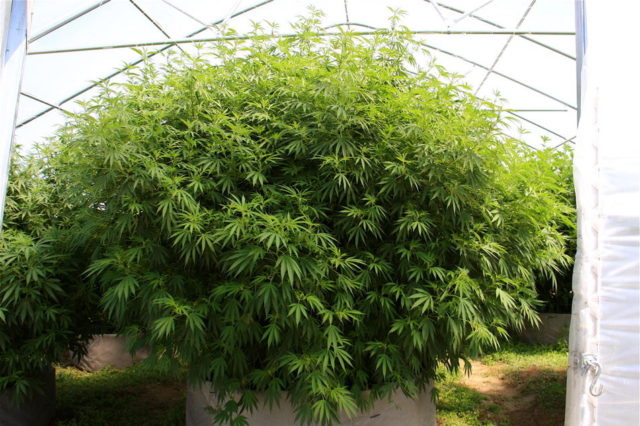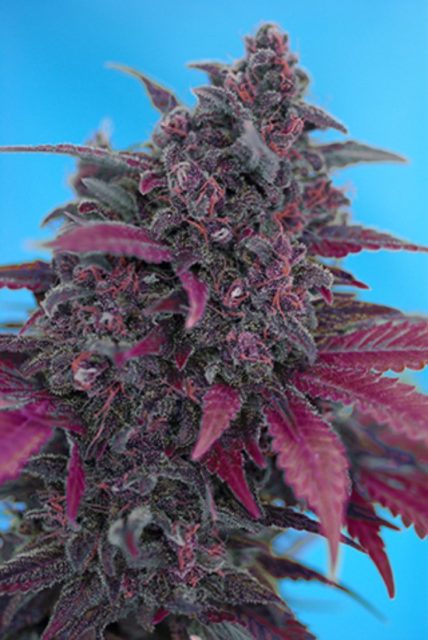Legal cannabis is the fastest growing industry in the United States.
Jobs will. And that is what the marijuana industry hopes will keep the Trump administration from cracking down hard on cannabis operations all over the United States. A new report from New Frontier Data projects that by 2020 the legal cannabis market will create more than a quarter of a million jobs. This is more than the expected jobs from manufacturing, utilities or even government jobs, according to the Bureau of Labor Statistics.

Marijuana is now legal for recreational use in several states. That’s why people can easily go on a site like greensociety and get their recreational marijuana with ease. Several years have gone by since Colorado and Washington simultaneously legalized cannabis for recreational use, and since then, millions of dollars in profits have been made by small businesses, and tens of thousands of jobs have been created. In spite of some early opposition to the process, the economic gains are clear. If you live in one of these states that has legalised recreational marijuana then you might be interested in checking out something like this online head shop to make the most of something that use to be illegal. Of course, if you have no interest in marijuana then don’t bother. But if you do, then this could help you have some more fun in your life.
Tax revenue has been the major selling point to local governments throughout the legalization effort. But there are also numerous other economic benefits to ending prohibition, including an influx of new jobs to the market. Keeping cannabis relegated to the black market means that the profits from its sale, as well as those working to earn those profits, remains off the books. By bringing marijuana into the legal realm, however, we’re getting a better idea of how the market actually works. And how much money is going in and out of it.

Opening up a new industry within the economy always brings enormous benefit, especially if that industry – like the marijuana industry – has been operating in the shadows for so long, with an established consumer base. It’s not just the actual growing and sale of marijuana that brings in revenue and creates jobs; legal cannabis is an entire industry, requiring support staff and regulators as well. All of this means a big influx of employment opportunities for those in areas where legalization is in full swing.
In New Mexico things are moving right along as licensed producers are granted the right to grow (medical) cannabis. One of these producers is right here in Taos and last week I had the opportunity to visit them at their headquarters after I received a call from my friend Asia Golden who has been hired by Southwest Wellness for a Management position, to assist with logistics and organization of the fledgling operation.
The Crawford family who are behind Southwest Wellness (former Taos Mayor Darren Cordova is on the Board), are from Texas but have a long footprint here in Taos. Clint Crawford and his wife Gerry Anderson (who is from Taos and also works at the facility), once owned the Norrthside Diner, so when a window of opportunity presented itself for the application to grow Medical cannabis here in Taos, Clint rallied other family members and the rest is history.

Barbara Crawford the Managing Member for the organization explained the rather arduous process of applying for the license as we sat in an office at Southwest Wellness. A very chic, very articulate and intelligent woman, Barbara’s no nonsense approach is all business, but underneath the professional veneer is an extremely sensitive, astute and empathic soul who clearly has her finger on the pulse of the times.
“We are the largest producers in the State,” she told me. “We have 38,000 sq ft of (controlled light deprivation), Greenhouses, and right now are permitted to grow 450 plants.”
“We currently grow 15 different strains of cannabis,” she said.
Southwest Wellness only produces the cannabis itself, not byproducts, but when Asia gave me a tour of the Greenhouses, she clarified that the concentrates, lubricants, salves, tinctures and edibles for sale in the Southwest Wellness Dispensary, are all made from the cannabis they grow.
Currently Southwest Wellness have one dispensary here in Taos and are in the process of opening another in Albuquerque.
“We are looking at Santa Fe and possibly Las Cruces as well.” Barbara told me. “We will be supplying the entire State.”
Currently cannabis is only available to card-carrying patients but I asked Barbara if she saw recreational marijuana being legalized here in New Mexico in the near future.
“Oh I think so,” she replied, “certainly in the next three or four years.”
Meanwhile Taos is clearly positioning itself to be in the forefront of this new economy. Three – story hotels and all!

The building that houses the company has been remodeled (by local architect, Doug Patterson),to accommodate the different stages of processing the plants once thy have been harvested. The Greenhouses are like plant hospitals; super clean, sterile environments complete with trays of water one walks through at each threshold to prevent contamination from the outside,
The plants themselves are huge. One of the growers, a young man named Shane was introduced to me by Asia, (he is one of around 25 people Southwest Wellness have already hired), explained that the plants are grown in fabric which makes them easier to move and are encouraged to spread and take up as much space as is possible, due to the limited number they are allowed to produce. The plants are not grown under lights, only the sun.
Although not totally organic, chemical pesticides are not used, instead a mix of soybean oil and sulfates are occasionally sprayed on plants only if and when predatory bugs are not able to totally eliminate pests.
I touched one of the gigantic buds on a plant as we walked by and the sticky residue remained on my fingers for the rest of the day. Shane told me to use a little olive oil to remove it when I got home, which did work.
After my Greenhouse tour, it was time to visit the dispensary, where Clint Crawford was taking care of a patient there to purchase some cannabis. The dispensary is already open but will celebrate with a Grand Opening in the next few weeks. When the gentleman had left, I asked Clint how people chose the cannabis they used for various ailments and he explained that most of them seemed to know exactly what they needed for their specific maladies.
“The best way to choose your cannabis is by smell,” he explained as he pointed to 15 containers on the counter in front of him. Each had air holes where the aroma of the herb could be sampled. He took a vial from a container on a shelf behind the counter, opened it and put it under my nose.

“What do you think?” He asked.
“A bit too strong,” I told him, recoiling from the almost acetone like smell.
“How about this one?” He opened another container.
“Too grassy.” It smelled like a freshly mowed lawn.
“Try this,” he said as he handed me yet another to sniff.
Third time’s a charm. “Delicious!” I pronounced the musky, spicy fragrance that wafted from the vial.
“Durban Poison.” He said.
I had to laugh then, having cut my pot teeth so to speak, on the sticks of Durban Poison we all coveted and smoked in chillums made from broken bottle necks, in South Africa where I am from, back in the halcyon hippie days of my wasted youth.
“You grow Durban Poison?” I was incredulous.

The classic sativa which hails from South Africa is a landrace strain, meaning its original genetics were pure and free of indica. After being smuggled out of Africa in the ’70s, Durban Poison became popular in Amsterdam because of its heavy smell and short flowering period, and apparently it didn’t take long for word to cross the Atlantic.
Barbara had told me that one of their Board Members was a South African, so it made perfect sense. Unfortunately I had discovered earlier that my Medical Marijuana Card had expired in July so I wasn’t able to purchase any to try, but once it’s been renewed I most certainly will. I’m a believer in the healing properties of the herb, having used it throughout my own personal journey with cancer.
I left the gated, fenced and fortess-like compound with the old Humble Pie song (30 days in the hole), in my head and sang it at the top of my lungs as I drove home, laughing to myself as I realized how much things have changed since my friends and I broke those bottles to “make a pipe”, way back when.
If you live on the road, well there’s a new highway code
You take the urban noise with some Durban poison
It’s gonna lessen your load
Or as America’s newest Nobel Laureate has long declared, “everybody must get stoned.”
The Southwest Wellness Dispensary is located on the corner of Salazar and Bertha in Taos. 1025 Salazar Road. They are open all week and have a Doctor on the premises every Tuesday. Dr Reich is one of the Board Members of the organization. Their Grand Opening is on September 15th.
They can be reached by phone at 575-737-8960.
Top photo of the Southwest Wellness Dispensary by Barbara Crawford. All other images stock files.



